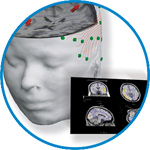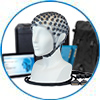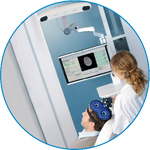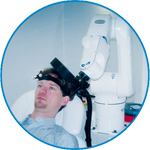- Home
- About ANT
-
Products

asa
asa is a highly flexible EEG/ERP and MEG analysis package with a variety of source reconstruction, signal analysis and MRI processing features.
.jpg)
eego mylab
The new frontier in multimodal brain research. With up to 16 kHz sampling rate, 256 EEG channels and unique software features, eego mylab gives you an unprecedented in-depth understanding of the human brain.

eego sports
eego sports offers complete freedom to collect high-density EEG data, bipolar EMG signals, and a variety of physiological sensor data, wherever and whenever required, with publish quality data in less than 15 minutes!

waveguard net
The waveguard net sets a new standard for research applications requiring high-density EEG data acquisition with quick preparation time, high flexibility, and subject comfort.

visor2
Our new and upgraded visor2 solutions integrate all the latest technologies for navigated rTMS, dual-coil navigation support, EEG-TMS recordings and pre-surgical evaluation for the highest quality in research and clinical procedures.

powerMAG ANT
The PowerMAG ANT 100 rTMS stimulator is designed for the specific needs of high-end TMS applications. Powerful high-frequency TMS as well as high precise single pulse and repetitive pulse protocols are combined in one single device.

xensor
xensor offers the solution for digitization of 3D electrode positions. xensor takes care of the whole procedure; it records, visualizes and stores positions acquired with a dedicated digitizer.

waveguard original
waveguard original is the cap solution for EEG measurements compatible with fMRI, MEG and TMS system. Use of active shielding guarantees performance in even the most demanding environments.

waveguard connect
waveguard connect EEG caps are a perfect match for hospitals and institutes aiming at reliable EEG, maximum uptime and great patient comfort! For optimal signal quality, the electrodes are made of pure, solid tin.

waveguard touch
waveguard touch is a dry electrode EEG cap. The unique Ag/AgCl coated soft polymer electrodes provide stable, research-grade EEG signals while maintaining subject comfort. The combination of these innovative dry electrodes and the industry-leading waveguard cap makes waveguard touch the best solution for dry EEG.

smartmove
smartmove allows planning of a complete TMS session ahead by defining stimulation sites based on anatomical MRI information and functional information like fMRI, PET or EEG/MEG.
Stay - References
- Support
- Events
- News
- Contact Us
You are here
Safety of EEG–fMRI recordings in newborn infants at 3T: A study using a baby-size phantom
Safety of EEG–fMRI recordings in newborn infants at 3T: A study using a baby-size phantom
Objective
We aimed to study EEG electrode temperatures during MRI recordings using a neonatal-size phantom to establish the safety of neonatal EEG–MRI.
Methods
We constructed a phantom set-up for co-registration of EEG and MRI measurements with newborn size configurations. The set-up consisted of a spherical glass phantom fitted with a customised MRI-compatible 64-channel EEG cap and EEG amplifier. Temperatures were recorded during and after five different scanning sequences (two T2∗ sensitised BOLD fMRI, one T1-weighted and two T2-weighted spin echo) in five electrode locations using a thermistor that was integrated into the electrode housing. A temperature increase >4 °C was defined a priori as the safety limit.
Results
During fMRI and T1 sequences, none of the electrodes showed meaningful temperature changes. Only one MRI sequence (T2 with Max turbo factor 25; SAR 89%) caused temperature increase in one electrode (Fpz; +4.1 °C) that slightly exceeded our predefined safety limit, while the conventional T2 sequence was within safety limits (up to +1.7 °C).
Conclusions
Co-registration of EEG and fMRI can be considered safe in babies with respect to electrode heating, which is the primary safety concern.
Significance
The present findings open up a possibility to commence studies where EEG and MRI/fMRI are co-registered in human babies. Such studies hold significant promise of a better understanding of the early development of brain function and neurovascular coupling.

 Read more
Read more.jpg)




